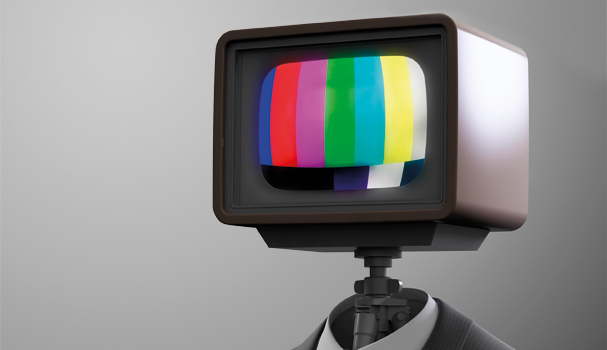Commenting recently at the Internet Advertising Bureau’s (IAB) video conference in London, YouTube’s head of brand propositions Derek Scobie remarked that advertisers “must break free of the 30-second TV ad mindset when it comes to online video or risk mediocre results”. Since the dawn of the internet, advertising has been in a near perpetual state of upheaval but, even now it has found a stable home on platforms like Facebook and Twitter, it seems there are more adjustments to be made.
There can be little doubt that streaming online video content is a radically different medium to tuning into a TV channel. “If you’re still thinking TV advertising when you’re approaching the web, you’ve got it all wrong,” says Steven Lucker, creative director of media agency Ever After. “It’s a little bit like thinking ‘how am I writing this book?’ when you’re creating a website.”
It’s true that the typical 30- or 60-second TV spot couldn’t be further from the channels for video content online. “Consider the move to services such as Snapchat, Instagram or Vine, which are sometimes six to ten seconds in terms of video content,” says Annabelle Spender, social media marketer at creative digital agency Bozboz. “It’s a completely different mindset.”
However, online video content obviously doesn’t just cater for those with the attention span of a hummingbird jacked up on e-numbers. “Other companies are finding success in using long complex videos,” says Spender. Whether it’s lush Rudimental-esque mini-films or videos on how to get the best out of a product, smart brands have also been catering to those wanting something a little more immersive in their visuals.
But, irrespective of length, there are more fundamental factors that set online video content apart from traditional TV advertising. “The main difference is audience context,” says Fergus Parker, CEO of content marketing agency Axonn Media. “When you’re looking at TV ads, you can pretty much guarantee that person is sitting at home in front of their TV 90% of the time. With online, you’ve got to be a lot smarter.”
Whilst traditional television advertising is a mechanical process with pre-booked slots that guarantee an advertiser a passive and contextually appropriate audience, the situation in which online content can be viewed is a rather more stochastic affair.
“They could be looking at your video content on the way to work, they might be looking at it actually in work, or on holiday,” Parker explains. “There are hundreds of devices now that you can look at video content on: smartphones, iPads, laptops, to name but a few. With TV advertising, because of the nature of TV, you know they’re going to be looking at your advert during the 7pm late showing but with online you don’t. Where and when they see your content really changes what you should be producing with your video.”

Essentially, wherever and whenever a consumer is viewing video material, it will be on their terms. And this touches on one of the cardinal factors separating TV ads from online video content. The vast majority of us have grown up with the idea that advertising dictates the TV schedules but, when it comes to streaming sites and social media, brands have to recognise that they are last to come to the party. “That’s the difference: before it was decided what people would like by ad agencies and now it’s decided by the individual,” says Spender. “It’s decided by the crowd.”
This means consumers can be quite territorial over what they perceive is their space. “Once you go online with brands, you are trespassing on an area which is generally preserved for user-generated content,” explains Lucker. Perhaps the worst mistake an advertiser can make is assuming they have the same captive audience online they have during an ad break because consumers are well aware that the power is in their hands.
“All you have to do is sit there and watch somebody who is about to watch a video and they’re clicking ‘skip ad! skip ad!’” says Lucker. “I don’t know anyone who sits and thinks ‘well actually, I was about to watch a Miley Cyrus video but instead I’m going to sit and watch this Audi ad for 30 seconds.’”
This is why it can prove to be something of a cold bucket of water poured over proceedings when advertisers try use video content to hawk their wares. “The number one rule of content marketing is ‘don’t talk about your products’,” Parker says. Part of the benefit of content marketing is it creates a customer journey, increasing their relationship with a brand; moving from them from awareness, via interest to action and eventually encouraging them to become advocates of your brand and raising awareness of it to a whole new set of consumers. “That’s a virtuous circle,” he explains. “But if you’re talking about products, you’re pretty much nailing the lid closed on that relationship there and then and stopping it from happening.”
All of this begs an important question: given the fact it’s fairly obvious that the tone of marketing on the internet has shifted, why are figureheads like Scobie still having to cajole enterprises into changing tack?
“There are still many people out there who are very cautious when it comes to the world of online,” explains Spender. “They’re going ‘I can’t see the point of changing what’s worked for so many years. It’s worked for 60 – 70 years; why do we have to change it now?” However, many drop their recalcitrance when confronted with the bare facts. “You have to explain: ‘video content today is changing; this is how many people are on YouTube’,” she continues. “Their jaws drop.”
It would be easy to infer from all of this that perhaps these forms of content marketing are ringing the death knell for traditional interruptive marketing. But, in reality, it seems this is unlikely.
“It’s not going anywhere,” says Lucker. “TV advertising is going to be around for some time.” The fact that corporate giants like Apple and Coca-Cola invest huge amounts of capital in brand-building campaigns shows the TV ad spot still has an awesome power to capture our hearts and there’s no question that video content and TV ads can happily co-exist. “But,” he concludes, “don’t make the mistake of thinking they’re the same just because they both move and make sounds.”
Dove – Real Beauty Sketches
picked by Steven Lucker, creative director of Ever After
Created by international advertising, marketing and public relations agency Ogilvy and released in April 2013, Dove’s Real Beauty Sketches is a social experiment designed to prove a point to women: they are more beautiful than they think.
In the film, a former FBI forensic artist listens to two descriptions of unseen women. One comes from the woman herself and the other from a stranger who has spent some short time in her company. “On each occasion the woman was far more beautiful in other people’s eyes than in their own,” relates Lucker. “There is this profound point that they’re making but they never mention skin, they never mention moisturiser or beauty products of any type.”
Backed up with all manner of additional content, including interviews with the artist and the women involved, Real Beauty Sketches is perhaps the quintessential video content campaign, attracting more than 700,000 Facebook likes and over 60 million views. “It’s just brilliant,” Lucker explains. “They didn’t try and sell a product, they did it subtly. But they didn’t hide the fact it was Dove.” ![]()
Share via:


















































